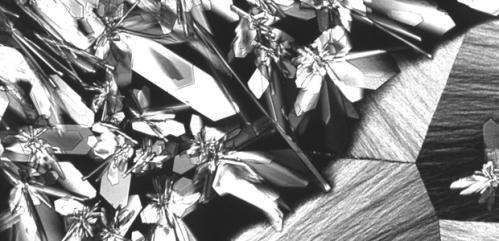Inventor patents anti-cholesterol formula

(Medical Xpress)—Senior Brandeis research scientist Daniel Perlman '68 has discovered a way to make phytosterol molecules from plants dispersible in beverages and foods that are consumed by humans, potentially opening the way to dramatic reductions in human cholesterol levels.
A U.S. patent (number 8,460,738) on the new process and composition was issued on June 11.
Phytosterols in plants and cholesterol molecules in animals are highly similar and when both are dispersed together they are attracted to one another. When they mix in the gut of an animal, the cholesterol molecules are competitively inhibited from passing into the blood stream and instead are excreted.
The ability of phytosterols to reduce cholesterol levels in animals has been recognized since the 1950s, but practical application of this knowledge was difficult because phytosterols are not naturally water-soluble, and they are only poorly soluble in fatty substances.
Perlman and K.C. Hayes, professor emeritus of biology and former director of the Foster Biomedical Research Laboratories, invented and patented a way to increase the bioavailability of phytosterols in fats more than 10 years ago. Their separate discoveries relating to fat metabolism and oxidative stability led to development of the Smart Balance blend of oils and a number of other food products.
However, improving dispersal of phytosterols in water has remained problematic, and was an obstacle to their general use in foods and beverages. Phytosterols placed in water-based substances will not disperse, and this has thwarted their cholesterol-reducing potential.
Now, Perlman has found a way to change the behavior of phytosterols in liquids by forming a new complex in which glycerin molecules attach to phytosterol molecules. Phytosterols and glycerin are heated together to a temperature at which the water molecule that usually attaches to each phytosterol molecule boils off and is replaced by a glycerin molecule. Because glycerin molecules have multiple places at which water molecules can be attached and because glycerin also inhibits crystal growth that complicates dispersal, the phytosterol-glycerin complex together with an emulsifier becomes dispersible in water-based foods.
"I had been playing with ideas on how to enhance the dispersability of this molecule for a number of years," said Perlman, who has more than 100 patents and pending patents on inventions he has made in his years at Brandeis. This was critically important, he explained, because "if you really want to have widespread public health benefits, you want to be able to put [phytosterols] in foods and beverages."
Hayes said he has tested Perlman's new compound in his laboratory for its effects on lipoprotein metabolism with excellent results in terms of its cholesterol-reducing action.
Physics Professor Seth Fraden, who is director of the Brandeis Materials Research Science and Engineering Center, said "the actual science of how it all works" when the attachment of glycerin changes phytosterol behavior "is not understood."
Perlman, he said, "had a chemical intuition for doing this. He is a good chemist; he has a feeling for molecules and what they'll do when you mix them. In addition to this intuition, he is very open-minded and will go in the lab and try things that other people don't do because their professors have told them it won't work.
"That's why he's a good inventor," Fraden said.


















